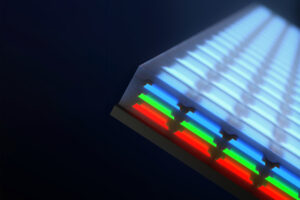To recreate a winter wonderland in a globe, Hodgins added a series of stacked thermoelectric coolers that use the Peltier effect to create a temperature difference between two different materials when an electric current is applied.
One side gets warm while the other gets cold, and by stacking several of the coolers together, a temperature difference of 140°F (60°C) was created, which was more than sufficient to cause the water vapor in the globe to condense and freeze on the aluminum snowman, draping it in snow. Check out the process in the video below.
Snow Globe With Glass Sand Clock
https://amzn.to/3WH9LHx
A tiny snowman was milled from aluminum to give the snow someplace to grow, while a pair of two-watt resistors were added to create vaporized water particles: the key ingredient of the white stuff. But Hodgins still had a problem: Heatsinks and fans can help prevent a CPU from over-heating, they don’t remove enough heat to create freezing cold temperatures which are another key ingredient for making snow.
Snow Globe With Real Snow; The Coolest Gadget!
If you’ve spent your life avoiding gift shops and tourist traps, snow globes are usually tacky souvenirs that trap a small 3D vignette or character inside a glass sphere filled with water and tiny white particles that swirl around when shaken, creating an artificial flurry effect. They’re a quaint way to either remember past travels or a time when the holidays came with piles of snow: two things that are hard to come by these days.







